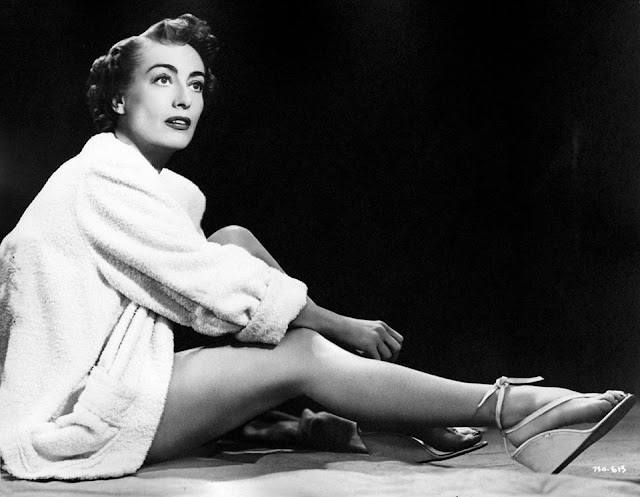It’s been suggested that – while Fontaine’s bar is temporarily shuttered due to the coronavirus scourge and the world is socially-isolating itself – the Lobotomy Room film club (specializing in the cult, the kitsch and the queer!) could continue
online for the time being. I’ll be occasionally posting fun oddities and
obscurities that are viewable on YouTube for your delectation. Remember:
Lobotomy Room is the home of Bad Movies We Love (our motto: Bad Movies for Bad
People) so don’t “at” me if you wind-up hating the movie and asking yourself, “What
the fuck did I just watch?”
Our first film selection is Queen of Blood (aka
Planet of Blood), an el cheapo 1966 science fiction movie (the meagre budget
was reportedly $50,000) directed by Curtis Harrington. Not to be confused with
Queen of Outer Space (1958) starring Zsa Zsa Gabor! Tagline: “Hideous beyond
belief … with an inhuman craving!”
As was a common convention for producer
Roger Corman’s b-movies of the period, this American flick incorporates (or “recycles”)
footage from a 1959 Russian film. (The special effects and relatively impressive
“outer space” scenes spliced-into the action are from the bigger-budgeted Soviet
source). This ultra-terse synopsis I found online is more succinct than
anything I could come up with: “astronauts go to Mars and return with a green
vampire woman.” And boy, does she stir up trouble! In fact, in no time the corpses
of astronauts begin piling-up, mysteriously drained of blood! (It takes everyone
a while to discern the alien woman is a vampire. It’s been noted this aspect of
Queen’s plot – the vulnerable space crew being picked-off one by one by a monster
- anticipates Ridley Scott’s Alien).
Director Harrington (1926 - 2007) was a
genuinely maverick, intriguing and durable talent with an overtly queer / camp
sensibility. Queen is very much an example of Harrington being handed lemons
and attempting to impose a bit of flair to the material. His wayward career
encompassed the occult / underground art film fringe (he was an associate of Kenneth
Anger, and appears in Anger’s 1954 film Inauguration of the Pleasure Dome) to wildly
entertaining hagsploitation horror movies in the early seventies (What’s the Matter
with Helen? and Who Slew Auntie Roo? both starring Shelley Winters, Killer Bees
with Gloria Swanson) to mainstream television establishment (he directed episodes
of TV series Charlie’s Angels, Wonder Woman and Dynasty!).
The pleasures of this film:
Some of the cannibalized
Russian special effects are genuinely haunting, eerie and dream-like. (In fact,
my tip is to drown-out the wooden acting and tedious dialogue, don’t try to
make sense of the narrative and just let the movie wash-over you like a dream).
The soundtrack of spooky “the-future-is-scary!” theremin music.
Queen has a fun,
kitschy sherbet-coloured retro-futurist look (it’s meant to be set in the year
1990 – which must have felt like the distant future in 1966), with lots of
starkly minimalist space-age décor in the control centre and spaceships, and
the astronauts wearing cling-y quilted athleisure wear outfits.
Judi Meredith as coolly efficient astronaut
Laura James sports truly impressive immobile and gravity-defying bouffant helmet
hair that screams “1966”.
It offers a sweet reminder of just how dreamily cute young
heartthrob leading men John Saxon and Dennis Hopper were at this early point in their careers.
/ The look of love: Florence Marly and Dennis Hopper in Queen of Blood /
But truthfully, the film is owned by the Queen of Blood herself. Honey, she is fierce! Played entirely mute (like Vampira in Ed Wood Jr’s Plan 9 from Outer Space) and possessing a glistening livid green complexion, sunken Marlene Dietrich cheekbones, glowing blood-shot eyes and a remarkable vertical fright wig hair-do (think troll doll), she is the film’s single greatest special effect. (I’d argue she’s an influence on the Martian vixen Lisa Marie plays in Tim Burton’s Mars Attacks!). Watch for how the alien smilingly (hungrily?) appraises the male astronauts - and then her lip curls disapprovingly when she spots Laura! Producers pressured Harrington to cast someone younger, but 47-year old Czech actress Florence Marly memorably instills the role with unearthly inscrutability and menace. She alone makes Queen of Blood worth investigating. Spoiler alert: the ending involves repulsive pulsating “alien eggs” served on a tray of lime gelatin - an appetizer from an atomic-era dinner party gone horribly wrong.
But truthfully, the film is owned by the Queen of Blood herself. Honey, she is fierce! Played entirely mute (like Vampira in Ed Wood Jr’s Plan 9 from Outer Space) and possessing a glistening livid green complexion, sunken Marlene Dietrich cheekbones, glowing blood-shot eyes and a remarkable vertical fright wig hair-do (think troll doll), she is the film’s single greatest special effect. (I’d argue she’s an influence on the Martian vixen Lisa Marie plays in Tim Burton’s Mars Attacks!). Watch for how the alien smilingly (hungrily?) appraises the male astronauts - and then her lip curls disapprovingly when she spots Laura! Producers pressured Harrington to cast someone younger, but 47-year old Czech actress Florence Marly memorably instills the role with unearthly inscrutability and menace. She alone makes Queen of Blood worth investigating. Spoiler alert: the ending involves repulsive pulsating “alien eggs” served on a tray of lime gelatin - an appetizer from an atomic-era dinner party gone horribly wrong.

























































